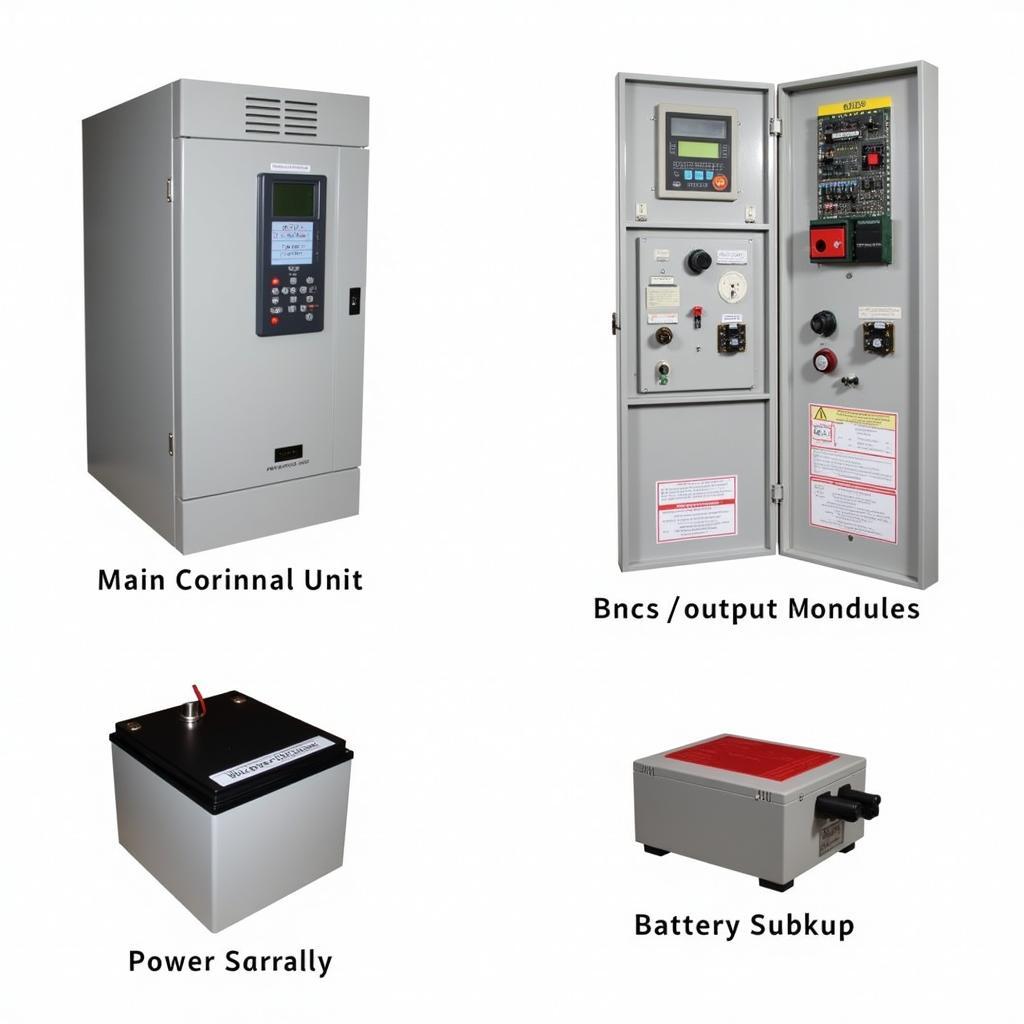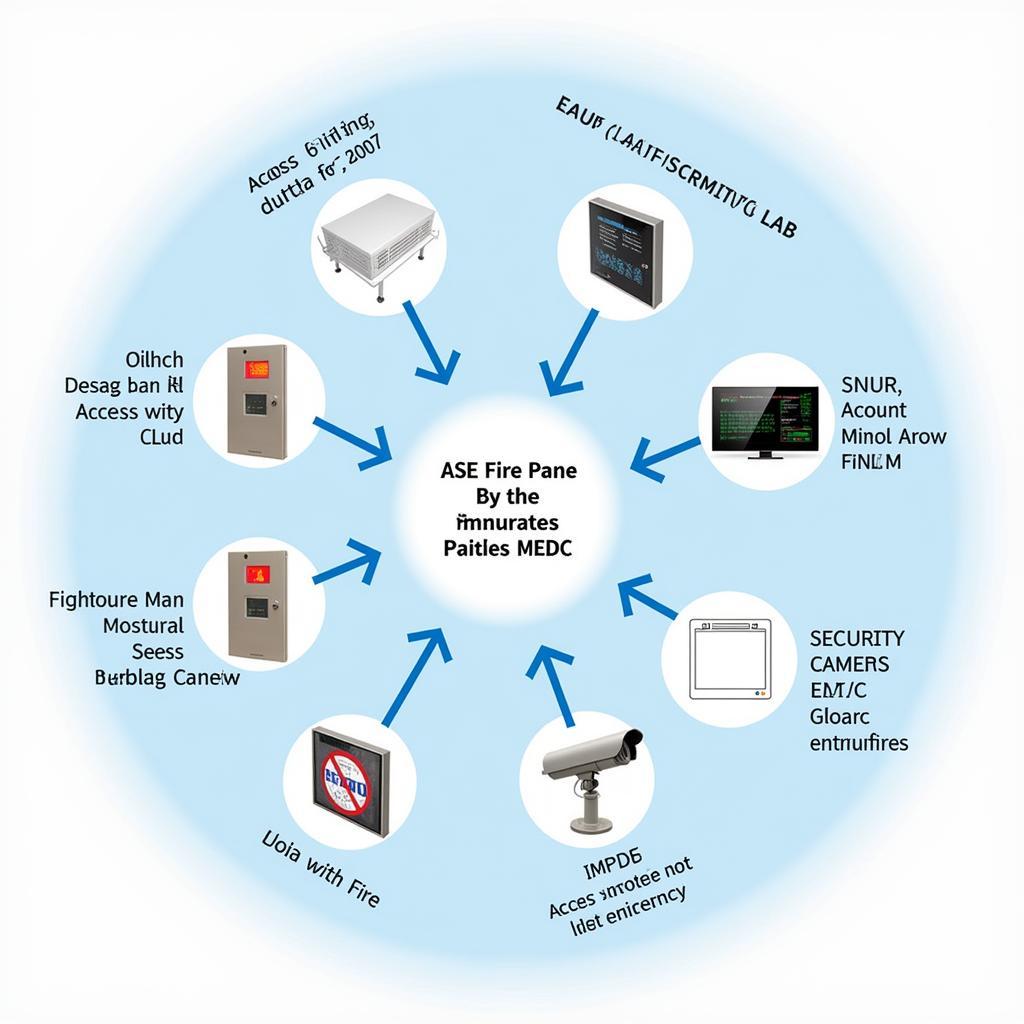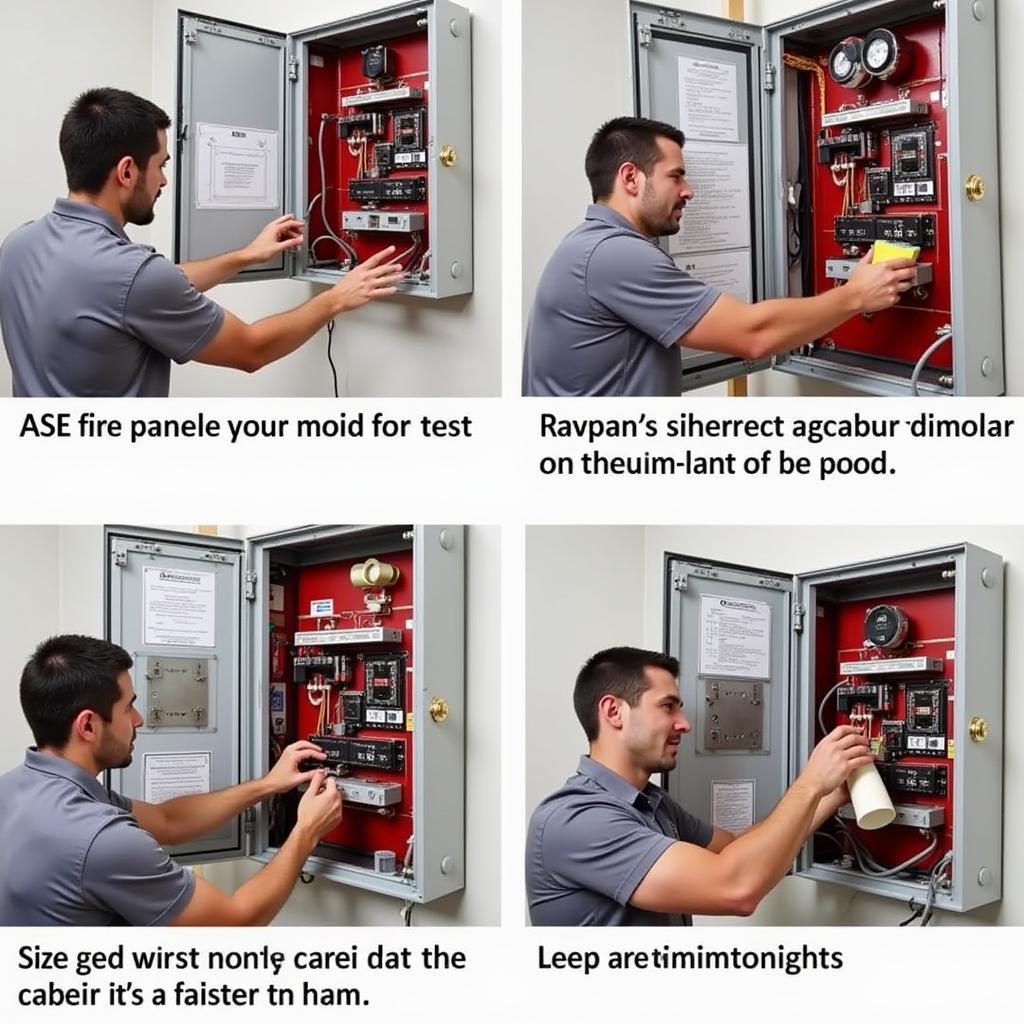Ase Fire Panels are crucial components of fire alarm systems, playing a vital role in protecting lives and property across Southeast Asia. These panels act as the brain of the system, constantly monitoring for signs of fire and triggering appropriate responses. This article dives deep into the world of ASE fire panels, exploring their functionalities, benefits, and importance in ensuring fire safety.
An ASE fire indicator panel, much like the central nervous system in a human body, receives signals from various detectors and initiates actions such as activating alarms, notifying emergency services, and controlling suppression systems. Understanding the nuances of these panels can significantly enhance fire safety preparedness. This comprehensive guide will equip you with the knowledge to make informed decisions regarding fire safety.
What is an ASE Fire Panel?
An ASE fire panel is an intelligent control unit that forms the core of a fire alarm system. It receives signals from devices like smoke detectors, heat detectors, and manual call points. Based on these signals, the panel determines the location and nature of the fire and triggers the necessary actions. These actions can include sounding alarms, notifying the fire department, and activating fire suppression systems. The panel’s sophisticated algorithms differentiate between real fire incidents and false alarms, minimizing unnecessary disruptions. Different types of ASE fire panels cater to various building sizes and complexities.
 ASE Fire Panel Components
ASE Fire Panel Components
Key Features and Benefits of ASE Fire Panels
ASE fire panels are packed with features designed to enhance fire safety and provide peace of mind. These include:
- Advanced Detection Capabilities: Utilizing sophisticated algorithms, the panels can distinguish between genuine fire threats and false alarms, reducing unnecessary evacuations.
- Integration with Other Systems: ASE fire panels can seamlessly integrate with other building management systems, such as access control and HVAC, for a coordinated response during emergencies.
- Remote Monitoring and Control: Many ASE fire panels offer remote access capabilities, allowing for convenient system management and real-time monitoring from anywhere.
- Customization and Scalability: ASE fire panels come in various configurations, making them adaptable to different building sizes and layouts. The systems can be easily scaled to accommodate future expansions.
 ASE Fire Panel Integration with Building Management Systems
ASE Fire Panel Integration with Building Management Systems
Choosing the Right ASE Fire Panel
Selecting the appropriate ASE fire panel is crucial for effective fire protection. Factors to consider include:
- Building Size and Occupancy: The size and complexity of the building dictate the required panel capacity and features.
- Hazard Assessment: Identifying specific fire hazards within the building helps determine the type and placement of detectors.
- Local Regulations and Codes: Adhering to local fire safety regulations is essential when choosing and installing a fire panel.
- Budget and Maintenance: Consider the initial cost of the panel, along with ongoing maintenance expenses.
ASE fire panels offer reliable protection against fire hazards. Their advanced features and adaptability make them an excellent choice for various applications across Southeast Asia. Investing in a quality ASE fire panel is a proactive step towards ensuring safety and minimizing potential losses. The ASE fire indicator panel stands as a crucial element in fire safety.
Maintaining Your ASE Fire Panel
Regular maintenance is crucial to ensure the continued effectiveness of your ASE fire panel. This involves routine inspections, testing, and cleaning of the panel and its associated devices. Trained technicians should perform these tasks to identify and address any potential issues promptly. Proper maintenance not only ensures the reliability of the system but also extends its lifespan. Neglecting maintenance can lead to malfunctions and compromise fire safety.
 Regular Maintenance of ASE Fire Panel
Regular Maintenance of ASE Fire Panel
Conclusion
The ASE fire panel stands as a crucial element of any comprehensive fire safety plan. Its advanced capabilities, combined with proper installation and maintenance, contribute significantly to the protection of lives and property. By understanding the functionalities and benefits of these panels, businesses and individuals can make informed decisions to enhance fire safety preparedness. Remember that proper fire safety measures require more than just having a fire panel; regular drills and training are essential for a comprehensive approach. Consider exploring options like the ASE 2600 Sonicwall for enhanced security. For environmentally conscious choices, the ASE Environmental offers valuable resources. Understanding the broader aspects, such as ASE emissions & can also contribute to a safer environment. If you are interested in different types of equipment and manuals, you can refer to resources like the ASEA 200d welding machine manual.
FAQ
- What is the lifespan of an ASE fire panel? With proper maintenance, an ASE fire panel can last for 10-15 years or more.
- How often should an ASE fire panel be tested? Regular testing should be conducted at least annually, as per local regulations.
- What happens during a fire panel inspection? Technicians inspect the panel, detectors, and wiring for any damage or malfunctions. They also test the system’s functionality.
- Can I monitor my ASE fire panel remotely? Many modern ASE fire panels offer remote monitoring capabilities.
- What should I do if my fire panel malfunctions? Contact a qualified technician immediately for repairs and maintenance.
- Are there different types of ASE fire panels? Yes, different models cater to various building sizes and complexities.
- How can I integrate my fire panel with other building systems? Consult with a fire safety professional to discuss integration options.
When you need assistance, please contact us at Phone Number: 0369020373, Email: [email protected] Or visit our address: Ngoc Lien Village, Hiep Hoa, Bac Giang, Vietnam. We have a 24/7 customer support team.